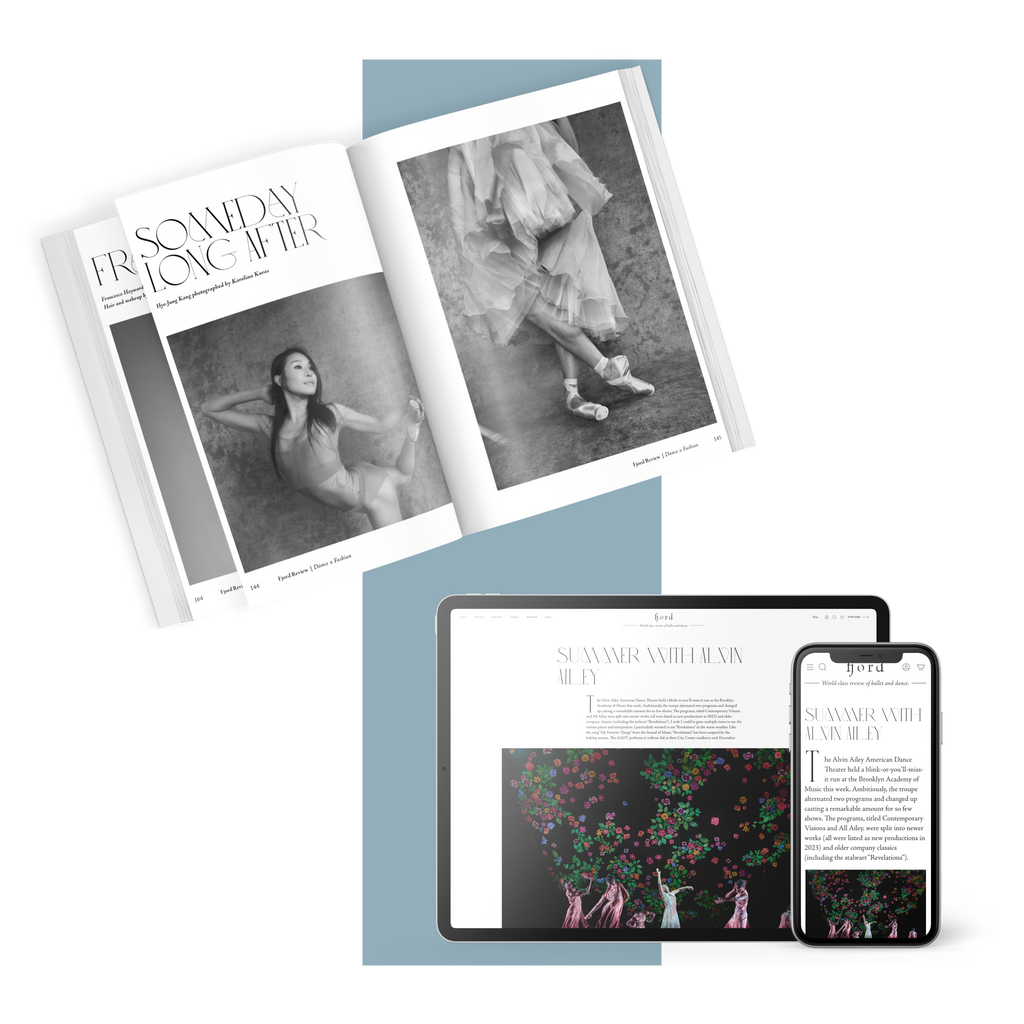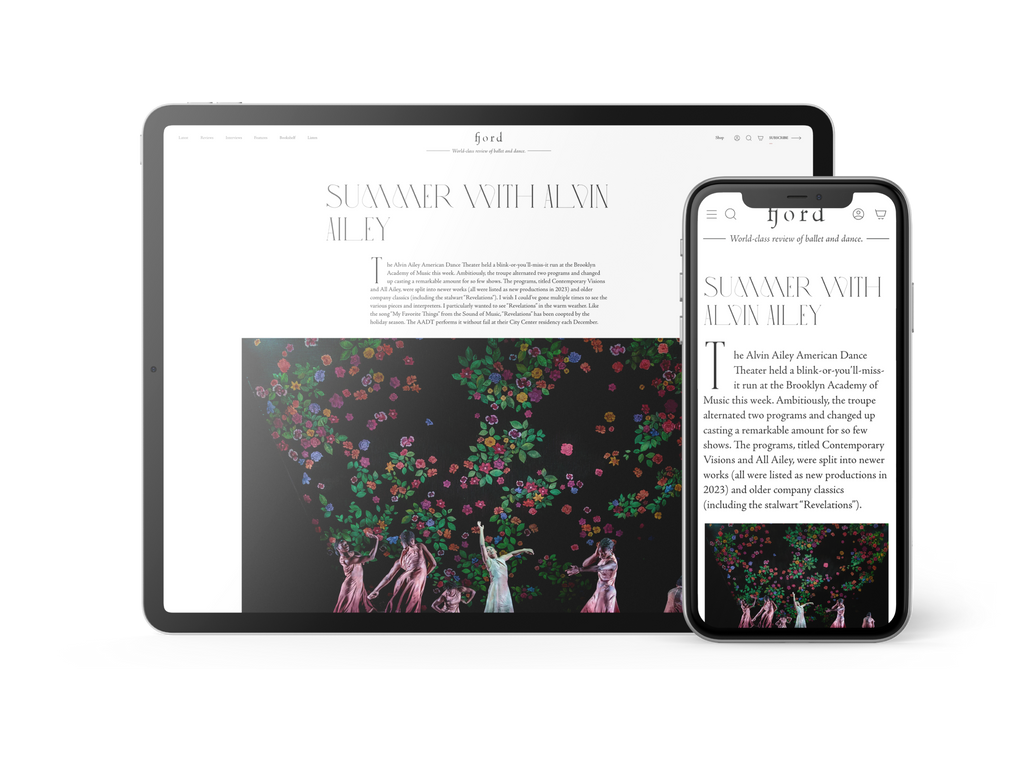Spellbound
Two performers crawl in on hands and knees wearing neon green, hooded coveralls—the lightweight papery kind made for working in a sterile environment—and clusters of balloons pinned to their backs.
Continue Reading
World-class review of ballet and dance.
“The Rite of Spring” is celebrated as much for its infamy as it is for its groundbreaking aesthetic and influence on twentieth-century dance and music. The uproar the avant-garde ballet—scored by Igor Stravinksy and originally choreographed by Vaslav Nijinsky for Sergei Diaghilev’s Ballets Russes—provoked during its 1913 premiere in Paris has enticed many a dancemaker to tackle it in the century since, with choreographers as diverse as Kenneth MacMillan, Martha Graham, Glen Tetley and Pina Bausch trying their hand. In fact, the work has undergone more than 150 interpretations since its debut, and while some are more liberal than others, two components remain in virtually every version: Stravinsky’s strident score and a libretto centred on the Chosen One, a sacrificial victim fated to dance herself to death.
Performance
Place
Words

Sasha Waltz & Guests in “Sacre.” Photograph by Bernd Uhlig


“Uncommonly intelligent, substantial coverage.”
Your weekly source for world-class dance reviews, interviews, articles, and more.
Already a paid subscriber? Login
Two performers crawl in on hands and knees wearing neon green, hooded coveralls—the lightweight papery kind made for working in a sterile environment—and clusters of balloons pinned to their backs.
Continue ReadingWill Rawls makes boundaries visible by defying them. Known for the disciplinary and topical range of his projects, the choreographer, director, and performer approaches issues of representation in “[siccer],” a multi-part, multi-site work co-presented by L’Alliance New York’s Crossing the Line Festival. A live performance at Performance Space New York accompanies a multimedia installation at the Kitchen, a book published by Wendy’s Subway, and an album published by the artist. With a creative process reaching back to 2018, the work delves explicitly into pandemic-era energies and inertias with focused intimacy and a pervasive sense of instability.
Continue ReadingIt is always interesting when multiple theme steps emerge over the course of a mixed repertory evening, but it is uncanny on one featuring five different ballets, each with a different choreographer and composer, covering a twenty-year span (2005-2025).
Continue ReadingZvidance premiered its new work “Dandelion” mid-November at New York Live Arts. Founded by Zvi Gotheiner in 1989, Zvidance has been a steady presence in the New York contemporary dance scene, a reliable source of compositional integrity, and a magnet for wonderful dancers.
Continue Reading
comments